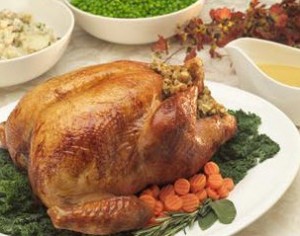 I don’t usually say “this is an article you’ll really want to pay attention to,” because of course, I think they are all important! But this is article is one you need to read all the way through (and consider passing on to your family and friends). Regardless of what you do about it, it’s important for you to know what a new ten year long research study has confirmed so that you can make informed decisions about your — and your loved ones’ — health.
I don’t usually say “this is an article you’ll really want to pay attention to,” because of course, I think they are all important! But this is article is one you need to read all the way through (and consider passing on to your family and friends). Regardless of what you do about it, it’s important for you to know what a new ten year long research study has confirmed so that you can make informed decisions about your — and your loved ones’ — health.
When we talked about pesticides and produce recently, one topic we did not cover in great detail was Genetically Modified Organisms or GMOs also known as Genetically Engineered or GE foods. Big biotech corporations such as Monsanto, Dow, Dupont, BASF, Bayer and Syngenta have been claiming that GE food is safe and completely harmless to consume.
Through their lobbying efforts, these corporations have been able to persuade the regulating agencies that no labeling is required, because they know that many consumers would opt not to purchase them if they knew.
Now despite their persistent claims that these foods are safe, a ten year study out of Europe has shown conclusively that GMOs and GE foods are not harmless: they cause damage to the digestive system and our ability to digest proteins, change the micro- structure of our intestines, alter our immune systems and cause us to eat more, gain weight — and retain the weight – than would occur with a non GE diet.
The study, which was led by a team out of Norway, but also included collaboration with researchers in Ireland, Austria, Hungary, Australia and Turkey, looked at genetically engineered corn, corn-based products, as well as animals that were fed a diet of GE grain, which is common farming practice today. The study concluded that animals that were fed a GE grain diet ate more, got fatter faster and retained the weight than those who didn’t eat genetically modified feed.
The study looked at rats, mice, pigs and salmon and found the same effect across all species. The study suggests that GE foods transfer their effects and so humans who consume the animals that have been fed the GE grain would also experience weight gain and weight retention (while consumers who eat non-GMO animals would not).
If you are finding the pounds creeping on and you are eating conventionally-farmed animal protein, you may want to consider changing to organic or more importantly, grass fed animal meat. Grass fed is the only meat we eat in our house and has been for awhile: not because of weight gain concerns, though this new information is definitely helpful to know; and not even because it tastes so much better; but primarily because of the other health concerns from eating animals who have been fed a genetically modified grain diet.
When the researchers compared animals that had been fed a GE diet to those who had been fed non-GE grains, they found that in addition to being fatter and eating more, the GE fed animals had enlarged organs, and differences in their livers, kidneys, pancreas, genitals and more. They also confirmed previous studies that demonstrated changes to the intestines of the GMO fed animals; the GMO fed animals had a different micro-structure in their intestines and an inhibited ability to digest proteins. Proper digestion of proteins is necessary for many biological functions, including the production of amino acids necessary for cell growth and function.
To understand what causes these changes, we need to know how the genetic modification works. In order to make the crops resistant to herbicides so that toxic sprays like Roundup can be used on the crop without damaging it, as well as to make the crops resistant to the pests that can eat and damage the crop and its yield, insecticides and herbicide-resistant sequences are inserted within the DNA of the plant. The DNA is thereby altered to include these new foreign chemicals and toxins within its gene sequences.
One of the insecticides implanted within the gene series is a toxic protein from the Bacteria Bt, or bacillus thuriengensis. This toxin breaks open the stomachs of the insects that try to eat it and kills them. While biotech companies, and the EPA, have insisted Bt only kills the insects that eat the crop and has no impact on the humans or animals that eat it, this ten year study concludes that that is not the case.
Biotech companies have long claimed that the Bt-toxin would be destroyed in the human digestive system and would not bind or interact with intestinal walls. The researchers, however, stated otherwise: “A frequent claim has been that new genes introduced in GM foods are harmless since all genes are broken up in the intestines. But our findings show that genes can be transferred through the intestinal wall into the blood; they have been found in the blood, muscle tissue and liver in sufficiently large segments to be identified… The biological impact of this gene transfer is unknown.”
A previous study from Quebec already confirmed that the Bt-toxin is present in the blood. Sherbrooke University Hospital found Bt-toxin present in the blood of 93% of pregnant women, 80% of umbilical blood in their babies and 67% of non-pregnant women. So we already know that the conclusion of this new study — that Bt can be transferred through the intestinal wall into the blood — is true.
But remember how Bt works? It is designed to break open the stomach of the insect. In addition to passing through the intestinal wall into the blood, could it be damaging our digestive tracts, causing tiny rips or tears? Could undigested foods and toxins be transferred into the blood from our digestive tracts? If that were the case, then we would be seeing increases in gastrointestinal concerns, food allergies, and autoimmune diseases since the introduction of Bt in the mid 90s. Which is the case. (I don’t know about you, but I have wondered why there are now so many kids with serious allergies when I grew up never knowing anyone with a potentially fatal food allergy!)
In addition, the blood brain barrier that prevents harmful toxins from penetrating the brain, which we spoke about in last week’s newsletter when we talked about the neurotoxin diacetyl’s ability to penetrate it, is not developed in a newborn. So the Bt-toxin we are finding in the blood would be able to penetrate the brain and cause learning disorders or cognitive impairment. (Some research is now underway looking at the potential connection to autism). We already saw that Bt was present in the umbilical cord blood of infants, so it’s not a question of if, but rather, to what extent and impact.
So what can we do to protect ourselves and more importantly, future generations? While the study confirms that Genetically Modified Organisms are not harmless as has been claimed, they aren’t likely to go away because the money involved is simply too great. As of now in the US, there are no laws requiring labeling of GMOs (and certainly not inform you if an animal protein you purchase has eaten them). But we are not powerless to take action. We can take political action and we can also vote with our wallets.
To vote with your wallet, choose organic and grass fed proteins. Look for wild caught fish as well, as salmon and other farm raised species are often fed GE foods. Some fruits and vegetables are labeled as genetically modified and you can find this by looking at the 5 digit PLU code sticker on them. Any number beginning with an 8 means it is genetically modified. But not all are labeled so when possible, buy organic and when buying corn, always look for organic.
To be heard politically, speak out about the right to know what is in our food. California now has a proposed amendment that would require labeling of genetically engineered foods. While the biotech companies have very deep pockets and won’t make passage easy, voting Yes on 37 in CA will be a huge step forward. Success in California can set the stage for additional states to follow and send a clear message to the regulatory agencies that we care about our food and have a right to know what we are eating.
To your wellness and health: your true wealth!
Inger
Author: Inger Pols is the Editor of the New England Health Advisory and Author/Creator, Finally Make It Happen, the proven process to get what you want. Get a free special report on The Truth About Sugar: It’s Not All Equal at www.IngerPols.com
Photo Source: Microsoft Clip Art

 We all want to look and feel our best and stay healthy, vibrant and full of energy but it can be hard when our days are packed full and we are under stress trying to get everything done. There may be little time to work out or we may be thrown off of our daily eating habits by changes in routine. Then when we are not at our best, we are confronted with temptations at gatherings, given food gifts by family and friends, or find ourselves eating out more than we normally do.
We all want to look and feel our best and stay healthy, vibrant and full of energy but it can be hard when our days are packed full and we are under stress trying to get everything done. There may be little time to work out or we may be thrown off of our daily eating habits by changes in routine. Then when we are not at our best, we are confronted with temptations at gatherings, given food gifts by family and friends, or find ourselves eating out more than we normally do.
 Follow me on Twitter
Follow me on Twitter 